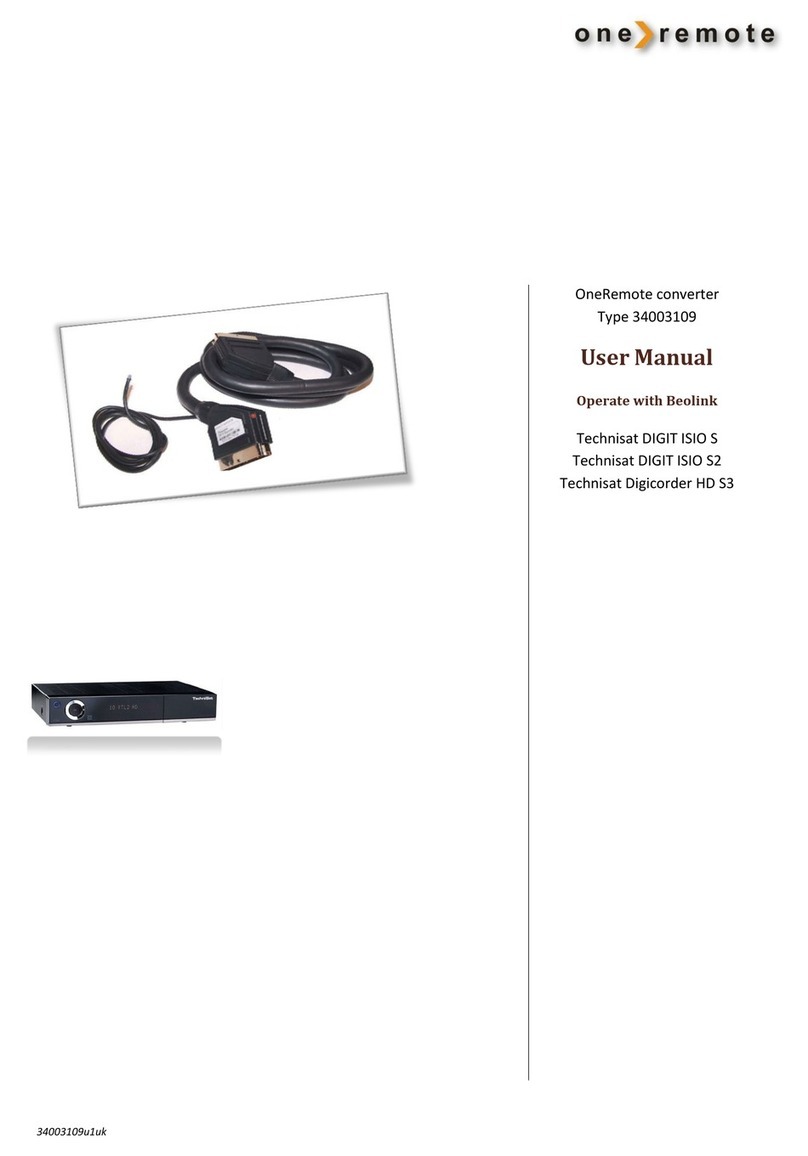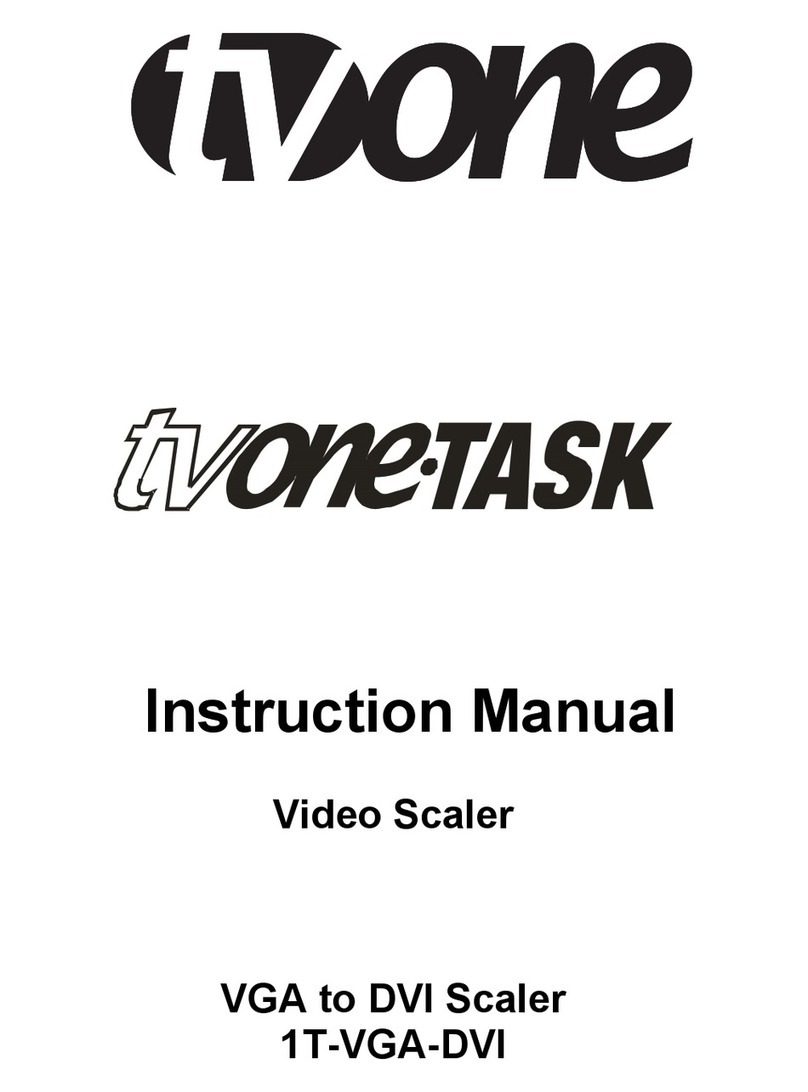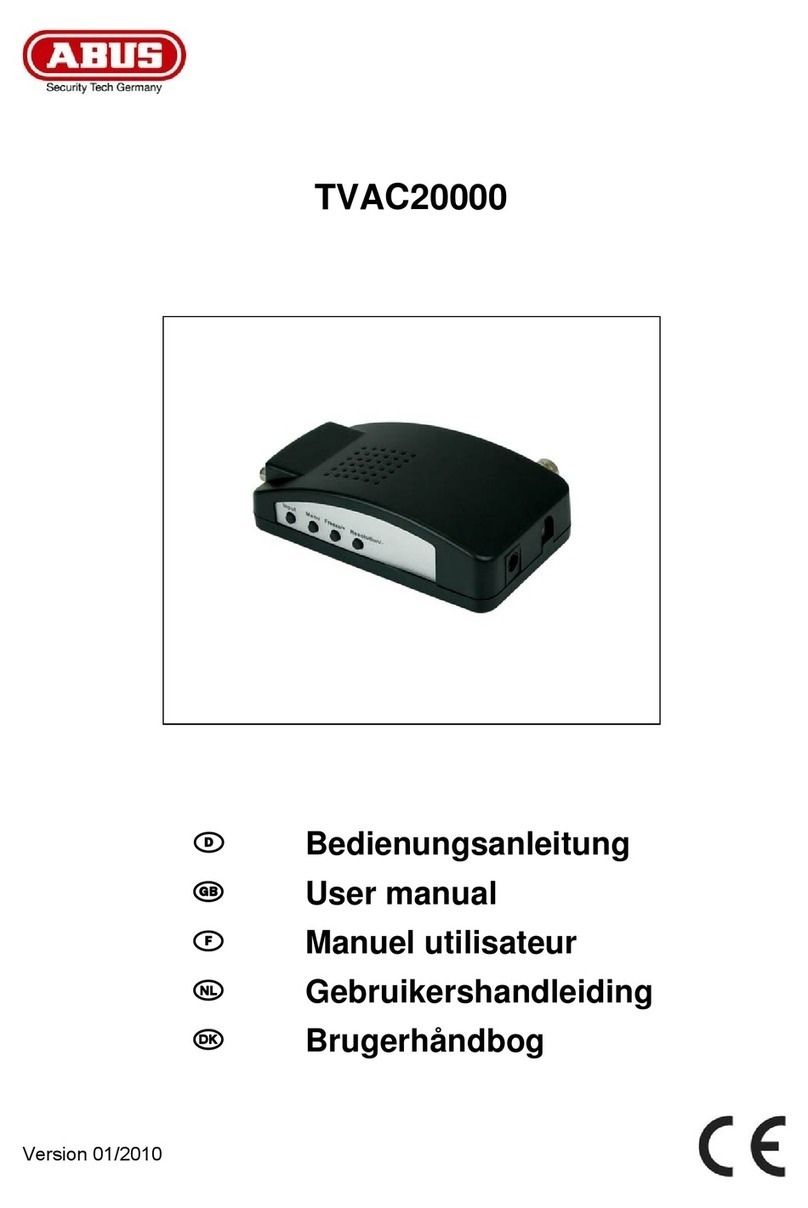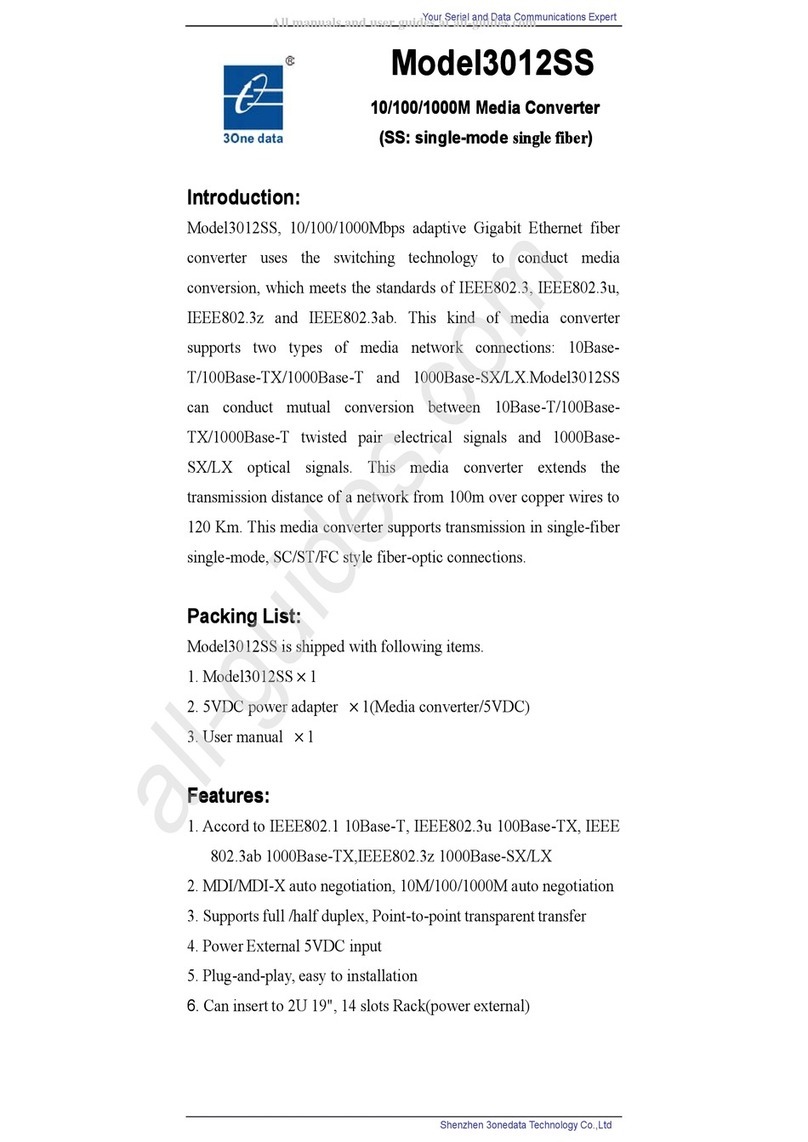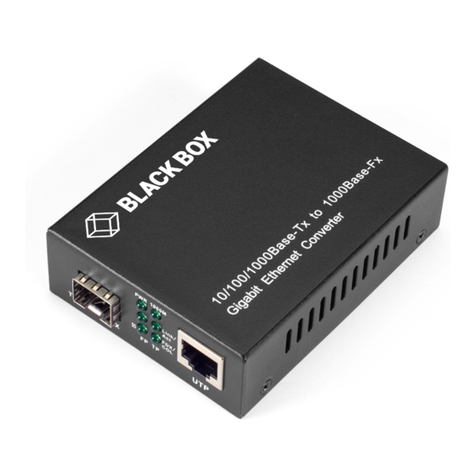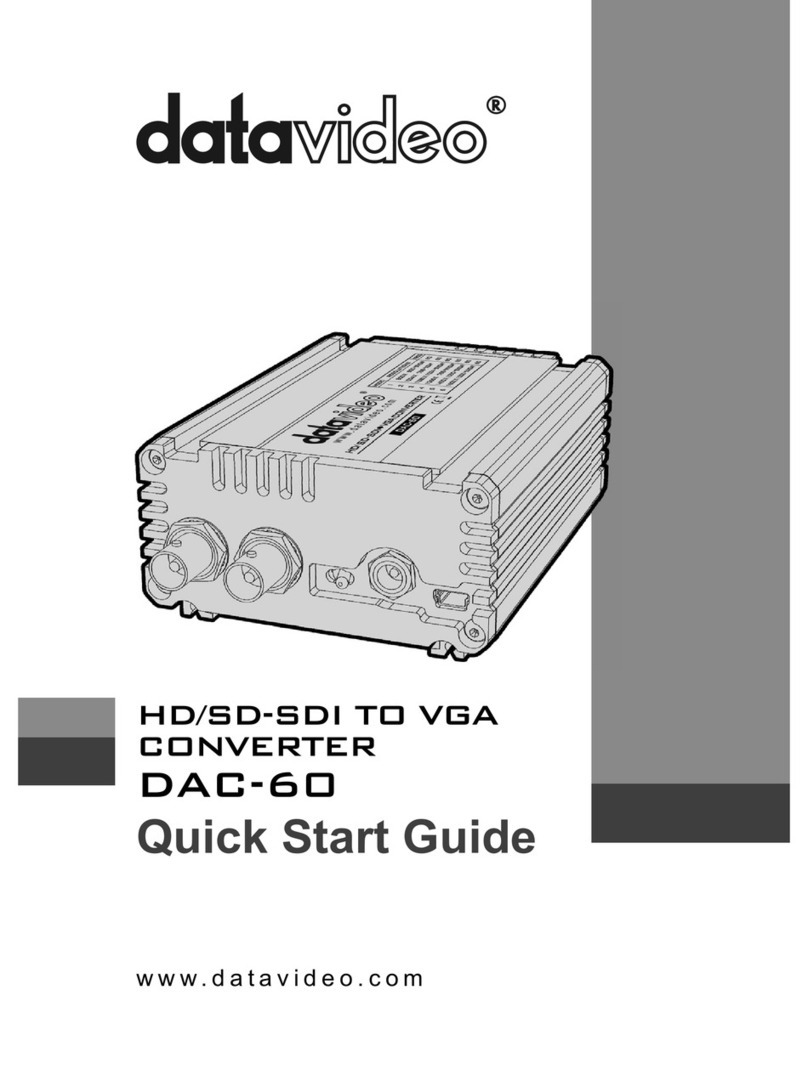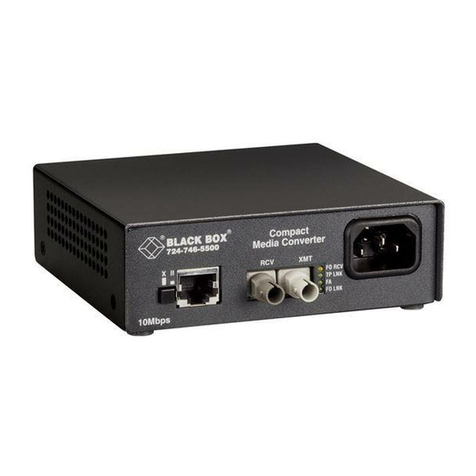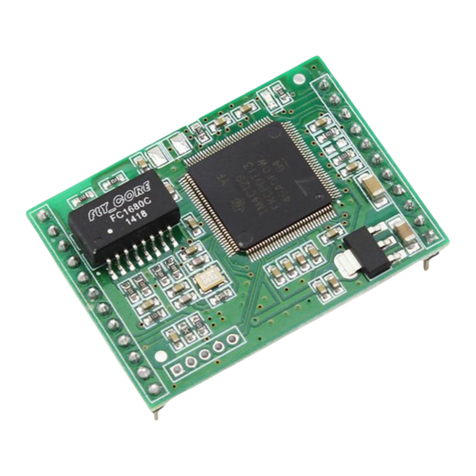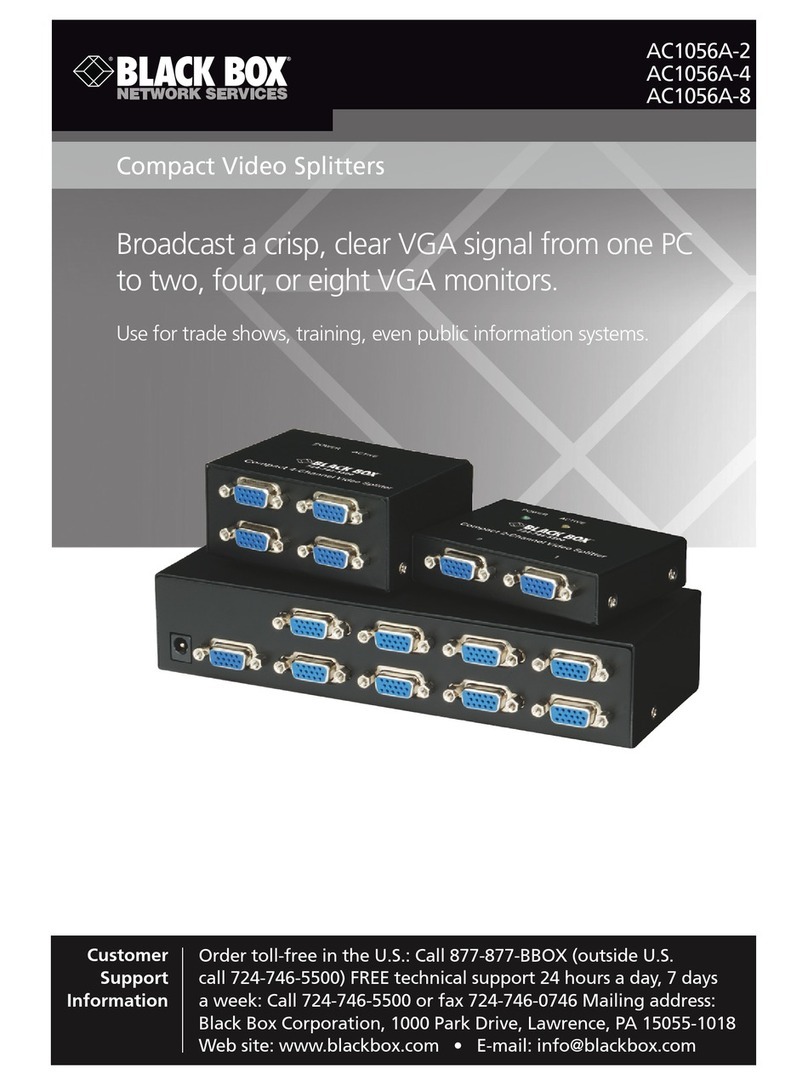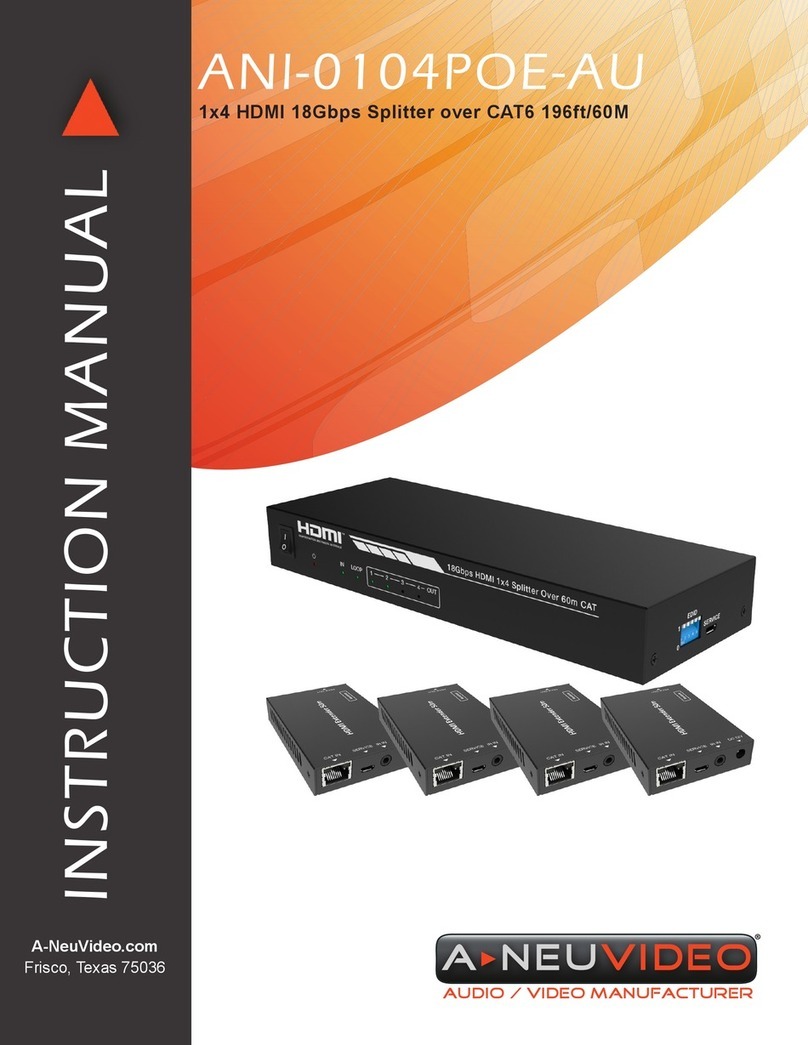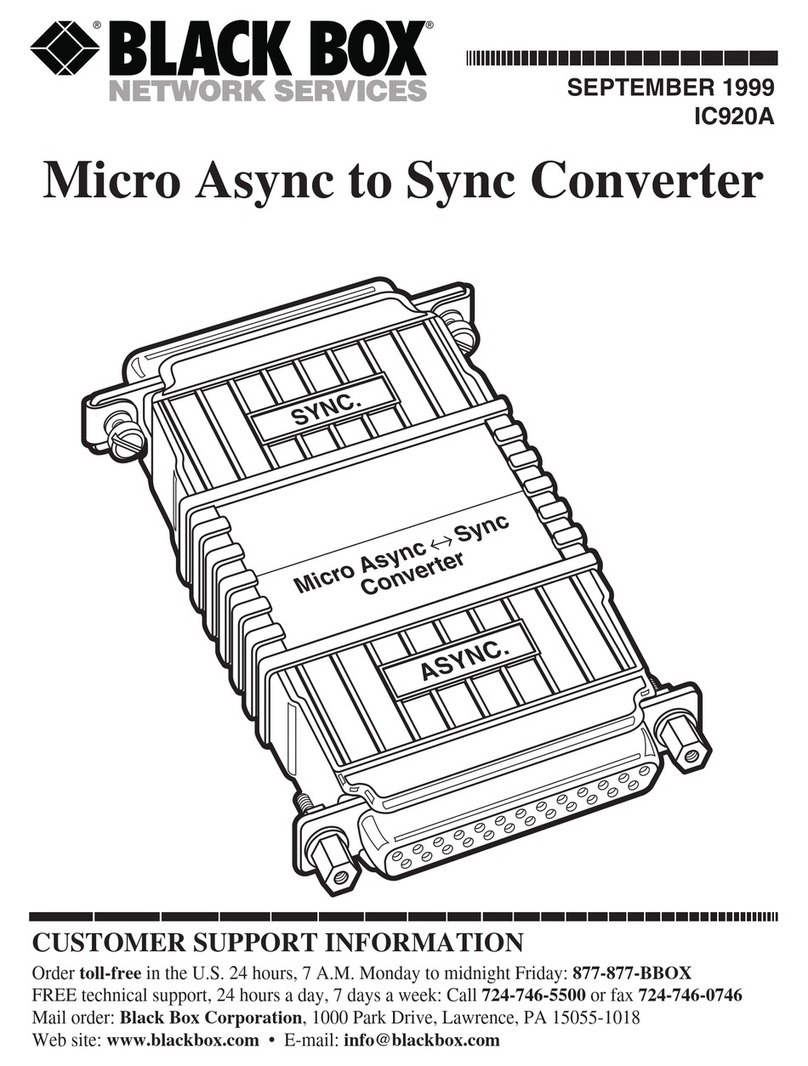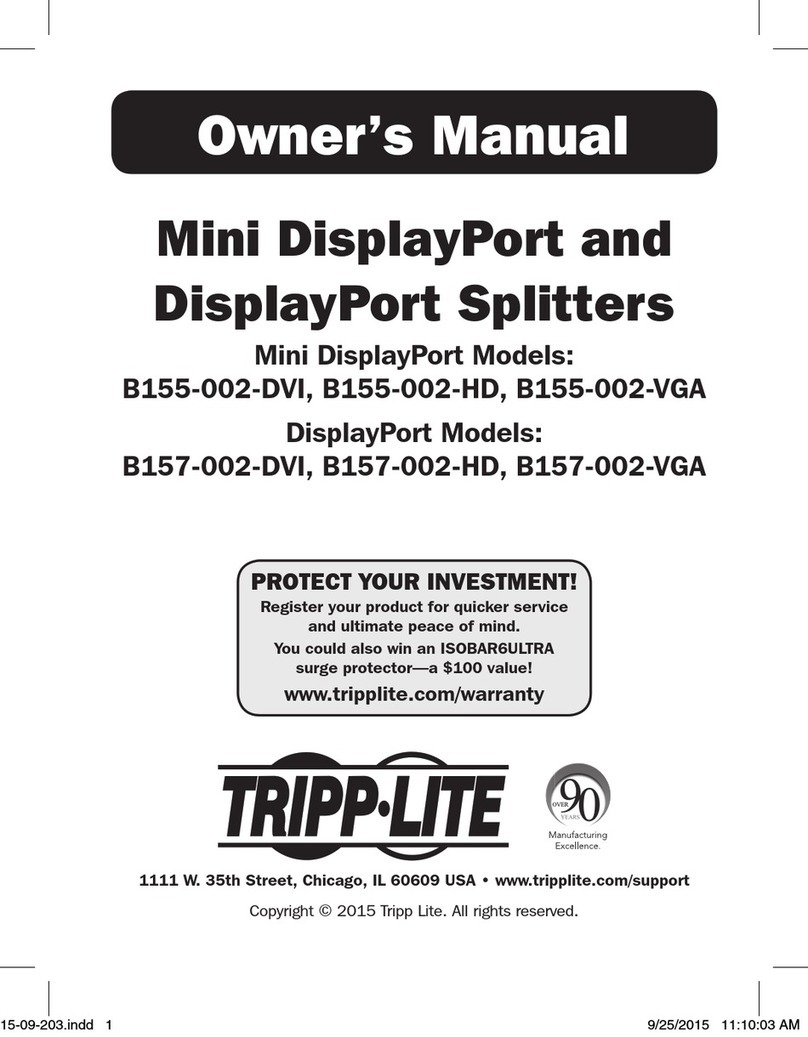Storm Interface 420 Series Installation and operation manual

420 Series RS232 Encoder Engineering Manual
420 Series Encoder Manual Version v1.9 Oct 2018 Page 1 of 22
Contents
Contents..................................................................................................................................................................................1
Product Overview....................................................................................................................................................................2
Communications Protocol.......................................................................................................................................................3
LCD Display ............................................................................................................................................................................4
Part Ordering Details - Storm Products .................................................................................................................................6
Part Details - Other Hardware Required (depending on end application) .............................................................................6
Part Details - Other Hardware Required (depending on end application) .............................................................................7
Part Details - Other Hardware Required (depending on end application) .............................................................................8
Connecting the Encoder to a 4-Way Keypad........................................................................................................................11
Connecting the Encoder to a 12 or 16 Way Keypad – Telephone Layout ...........................................................................13
Connecting the Encoder to a 12 or 16 Way Keypad – Calculator Layout ............................................................................15
Connecting the Encoder to the Storm 5000 Series Integrated Keypad................................................................................17
Connecting the Encoder to Storm 6000 Keypads ................................................................................................................19
NOTICE
This document is provided for use and guidance of engineering personnel engaged in the installation or application of
Storm Interface data entry products manufactured by Keymat Technology Ltd. Please be advised that all information,
data and illustrations contained within this document remain the exclusive property of Keymat Technology Ltd. and are
provided for the express and exclusive use as described above. This document is not supported by Keymat
Technology’s engineering change note, revision or reissue system. Data contained within this document is subject to
periodic revision, reissue or withdrawal. Whilst every effort is made to ensure the information, data and illustrations are
correct at the time of publication, Keymat Technology Ltd. are not responsible for any errors or omissions contained
within this document.
No part of this document may be reproduced in any form or by any means or used to make any derivative work (such as
translation or adaptation) without written permission from Keymat Technology Ltd.
For more information about Storm Interface and its products, please visit our website at
www.storm-interface.com
©Copyright Storm Interface. 2017
All rights reserved

420 Series RS232 Encoder Engineering Manual
420 Series Encoder Manual Version v1.9 Oct 2018 Page 2 of 22
Product Overview
The Storm 420 Series Encoder provides a serial interface between keypad and host system. It can be supplied either as
a separate encoder module or pre-assembled into a Storm keypad to suit end user requirements.
Features / Specifications
Input Power + 5V ± 0.25V dc
RS232 Output via 6 pin Molex 2.54mm (.100") Pitch KK® Series Connector
Drives Powertip 80 Character LCD Display from keypad
Direct connection to underpanel mounted 12 key, 16 key, 20 key Storm Keypads.
Ribbon Cable needed for top panel fixing 4 key, 12 key, 16 key Storm Keypads
Overall Footprint 89mm x 66mm
Mounting Centres at 43.2mm and 73.5mm (3mm holes provided for pcb standoffs)
Electromagnetic Compatibility (EMC)
Storm 420 Series Encoders are classified as a component with regard to the European Community EMC regulations. It is
the equipment manufacturers responsibility to ensure that systems using the Storm 420 Series Encoder are compliant
with the appropriate EMC standards.
If the electronic system requires input protection against high voltage transients (to meet CE requirements) it is
recommended that an external interface board is located at the point where the external wiring enters the electronic
system enclosure.
Using the 420 Series Encoder with Storm 5000 Series Integrated Keypads
As a combination the Storm Integrated Keypad/ Display Module with Encoder forms a complete serial communications
device. Alphanumeric output from the unit is communicated via the familiar RS232 physical link layer.
The keypad has 20 keys including ten numeric keys and a further ten special function keys. The LCD module displays 80
characters across 4 lines. Both the keypad and LCD module may be backlit from the controller board.
The module has been designed in such a way that it can be used as part of an embedded application, possibly using a
separate host microcontroller or PC to communicate with the module. Alternatively it may be used as an input interface
since the keypad and LCD functions have been designed to be familiar to most users.
The keypad is arranged as a 5-row, 4 column matrix and is scanned and debounced by the module’s built-in
microprocessor. The debounce filter is set at 64ms. No typematic key rollover function is implemented. Multi-key lockout
is, however, implemented in the firmware.
Use of 420 Series Encoder to provide RS232 output from Storm K Range Keypads
When used with any Storm Interface matrix keypad, the encoder can either be fitted directly to the rear of the keypad, or
connected via a ribbon cable. Please note that the cables required to connect a keypad to the encoder are custom cables
and are not provided by Storm.
The encoder can either be fitted directly to the rear of a standard Storm K Range Keypad, or remotely by a ribbon cable.
Where Storm K Range Keypads are underpanel mounted the 420 Encoder can be directly connected, requiring no
additional mounting hardware.
The overall depth required to house the 420 Encoder is 32mm (1.25in) when measured from back of keypad.
Where Storm K Range Keypads are fixed to a panel surface, a ribbon cable and mounting hardware are required (these
items not included with encoder)

420 Series RS232 Encoder Engineering Manual
420 Series Encoder Manual Version v1.9 Oct 2018 Page 3 of 22
Communications Protocol
Physical Link Layer
The module transmits and receives data using RS232 signalling with a voltage swing of approximately ±9V. DIP
Configuration Switch 8 selects between 9600 baud (DIP switch off) and 1200 baud (DIP Switch on). In both conditions, 8-
bit data is used with no parity and one stop bit. This may be summarised as follows….
DIP8 OFF 9600,8,N,1
DIP8 ON 1200,8,N,1
No software or hardware handshaking is used since the data rate is low relative to the bandwidth of the communications
protocol.
Only the TX, RX and Ground signals are employed. The chosen nomenclature is that TX means transmission out of the
module.
Data buffering
Both data transmission and reception are controlled by the module’s built in microprocessor using a pair of stacks- one for
transmitted characters and one for received characters. These allow the application to send data to and from the unit
largely without consideration of the timing constraints of the RS232 physical link layer.
Provided the stacks are not filled, data can be freely sent to and received from the module and the module will buffer the
characters until such times as it is able to process them.
The buffer sizes are as follows…
Data transmission (keypad data out of module) 16 bytes
Data reception (LCD data into module) 48 bytes
Should the buffers be filled, further characters will not be pushed onto the stacks, but instead are discarded.
Character echoing
Characters received from the host terminal/microprocessor may be echoed back to the host by setting DIP Configuration
Switch 2 to ON. With DIP Switch 2 OFF the characters are not echoed.
Characters resulting from key strokes are never echoed to the LCD display, but are simply sent via the RS232 TX pin to
the host application.
Brown-out
If the DC supply voltage drops below 2.85V then the encoder will shut down, and will restart automatically when the
supply voltage is restored back above this level

420 Series RS232 Encoder Engineering Manual
420 Series Encoder Manual Version v1.9 Oct 2018 Page 4 of 22
LCD Display
The LCD display comprises 80 characters in all, arranged as 20 characters on each of 4-lines. The full range of standard
ASCII characters are available, including lower case letters. Some, but not all, of the extended ASCII characters are
available. Appendix 3 lists the available characters.
Power-up message
At power-on the LCD display shows hardware and software version numbers and communications information for a
period of approximately 5 seconds. After this time the display automatically clears and the cursor is located at the first
character on the left of line 1.
LCD operating principles
The LCD interface is designed to be suitable either for keypad data input (for example as a data entry terminal) or for
embedded microprocessor applications.
It has been designed to operate in a similar way to a teletype terminal since this is a familiar environment to most users
and is consequently intuitive.
The cursor begins on the left of line 1. Entered characters move the cursor progressively further to the right of line 1 until
the end of the line is reached. Entering one further character automatically moves the cursor to the beginning of line 2, i.e.
automatic text wrapping is implemented. This applies to all lines.
Once the end of line 4 is reached, entering one further character results in all lines moving up one place, resulting in the
contents line 1 being discarded, line 2 moves to line 1, line 3 moves to line 2 and line 4 moves to line 3. Line 4 is
subsequently cleared and the cursor moves to the beginning of line 4.
Special characters
The Carriage Return key is supported (ASCII character 0x0D) and results in the cursor moving to the beginning of the
next line, exactly as described above. The Line Feed key (ASCII character 0x0A , or Ctrl-J in HyperTerminal ) is also
supported and gives the same functionality as carriage return.
The backspace key (ASCII character 0x7F) and Del key (ASCII character 0x08) may be used to delete the last entered
character and move the cursor back one place. This can be repeated until the cursor is at the beginning of the current
line, but no further (exactly as a teletype terminal).
The Tab key (ASCII character 0x09) is supported, and enters four spaces, even if this involves a line-wrap.
The Form Feed key (ASCII character 0x0C, Ctrl-L in HyperTerminal) is implemented as a ‘clear screen’ function and
returns the cursor to the beginning of line 1..

420 Series RS232 Encoder Engineering Manual
420 Series Encoder Manual Version v1.9 Oct 2018 Page 5 of 22
Typical implementations
An embedded application where the LCD is written to by a separate microprocessor or computer would typically send a
Form Feed character followed by up to 80 characters, possibly interspersed with carriage returns to reduce the number of
characters to be transmitted.
It is unlikely that such as application would make use of the backspace function since there are unlikely to be errors in
data entry, although the line-wrap feature may be used to allow the microprocessor to treat the display as a contiguous
array of 80 characters with no requirement for carriage returns.
A terminal-like application, however, where the user is permitted to type any characters on the LCD (perhaps using an
application such as HyperTerminal) would almost certainly make use of all the features built into the module such as line-
wrap and special characters to make the interface more user friendly.
LCD adjustment
A potentiometer is provided on the module interface circuit board to allow the contrast of the LCD display to be adjusted.
Wide Temp Range Displays require 0V to -9V ; Std Temp Range Displays require 0V to +5V
Supported Displays
POWERTIP TECHNOLOGY CORP.
20 Char x 4 Line Display PC 2004LRU-AWA-H, PC 2004LRU-ASO-H Wide Temp Range
Pin Symbol Function
1 Vss Power supply(GND)
2 Vdd Power supply(+)
3 Vo Contrast Adjust
4 RS Register select signal
5 R/W Data read / write
6 E Enable signal
7 DB0 Data bus line
8 DB1 Data bus line
9 DB2 Data bus line
10 DB3 Data bus line
11 DB4 Data bus line
12 DB5 Data bus line
13 DB6 Data bus line
14 DB7 Data bus line
15 A Power supply for LED B/L (+)
16 K Power supply for LED B/L ( )

420 Series RS232 Encoder Engineering Manual
420 Series Encoder Manual Version v1.9 Oct 2018 Page 6 of 22
Part Ordering Details - Storm Products
4200-00[x] RS232 Encoder
4200-101 Ribbon Cable 16 Way, 65mm long for LCD Connection
for use with FT5000 Integrated
5001-000201 LCD 4 x 20 Powertip Display
Part Details - Other Hardware Required (depending on end application)
Cable for +5V Supply Two wire with tinned ends
Cable for PC Connection Cable 6 Way Molex KK to Serial Port as drawing below
9 Way portable PC cable.
RS part number 758-7541 (cut one cable to make two assemblies)
2.54mm Pitch KK Crimp Terminal housing 6-Way with locking ramp.
RS part number 296-4984 or Molex Part number 22-01-2065.
1 - off required
KK Crimp terminals.
RS part number 467-598 or Molex Part number 08-50-0032.
6 - off required.
Yellow M3.5mm crimp ring terminal.
RS part number 534-468.
1 - off required.
1 TX
2 RX
3 NC
4 NC
5 GND
6 NC

420 Series RS232 Encoder Engineering Manual
420 Series Encoder Manual Version v1.9 Oct 2018 Page 7 of 22
Part Details - Other Hardware Required (depending on end application)
Cable for LCD Connection Ribbon Cable 16 Way
Buy direct from Samtec.
Part number IDSS-16-D-X.X (X is the length specified in inches).
Cable for 4 Way Keypad Ribbon Cable 5 Way Molex KK to bare ends
2.54mm Pitch KK Crimp Terminal housing 5-Way with
locking ramp, RS part number 679-5385P or
Molex Part number 22-01-3057.
1 - off required
KK Crimp terminals. RS part number 467-598.
Molex Part number 08-50-0032.
5 - off required.
2.54mm Ribbon cable length to suit application.
RS part number 214-0661
This is a 10-way cable, tear down to make a 5 way
Bare ends to be soldered to encoder.

420 Series RS232 Encoder Engineering Manual
420 Series Encoder Manual Version v1.9 Oct 2018 Page 8 of 22
Part Details - Other Hardware Required (depending on end application)
Cable for 4 way Backlit Keypad Ribbon Cable 7 Way Molex KK to bare ends
2.54mm Pitch KK Crimp Terminal housing 7-Way with
locking ramp.
RS Components 679-5404P.
Molex Part number 22-01-3077.
1 - off required
KK Crimp terminals. RS part number 467-598.
Molex Part number 08-50-0032.
7 - off required.
2.54mm Ribbon cable length to suit application.
RS part number 214-0661
This is a 10-way cable , three ways should be stripped
off before assembly.
Bare ends to be soldered to encoder.

420 Series RS232 Encoder Engineering Manual
420 Series Encoder Manual Version v1.9 Oct 2018 Page 9 of 22
Table of Encoder Connections
Keypad Connector (on reverse of pcb)
= pin connection made Direct connection to rear of keypad ?
KEYPAD TYPE
6000 Series Fit polarisin pin
Fit polarising
pin YES —fit polarising pins to positions 1and 13
FT5000 Fit polarising pin
Fit polarising
pin YES —fit polarising pins to positions 1and 13
12 / 16 WAY BACKLIT Fit polarising pin
Fit polarising pins YES —fit polarising pins to positions 1,12 and 13
12 / 16 WAY NOT BACKLIT Fit polarising pins
Fit polarising pins YES
4 WAY BACKLIT Fit polarising pin
Fit
p
olarising
p
in
Fit
polarising
p
in
NO —separate cable required
STD version needs 5 way cable
BACKLIT version needs 7 way cable
Fit polarising pins as required
4 WAY NOT BACKLIT Fit polarising pins
Fit polarising pins
Encoder
Pin 1 2 3 4 5 6 7 8 9 10 11 12 13
R = ROW,
C = COLUMN To Keypad LED
CATHODE TAMPER
IN R1 R2 C1 C2 C3 C4 R4 R3 R5
FUNCTION
KEYS
TAMPER
OUT LED
ANODE
PIN 1 ON REVERSE
RS232 OUTPUT
NC
GND
NC
NC
RX
TX (Pin 1)
JUMPER CONTROLS
LED COLOUR
RED Θ Θ
Θ Θ
GREEN Θ Θ
Θ Θ
JP8
FACTORY
USE
ONLY
LCD Connector, 16 pins, 0.1” square pins
Pin 1 2 3 4 5 6 7 8 9 10 11 12 13 14 15 16
Symbol Vss Vdd Vo RS R/W EDB0 DB1 DB2 DB3 DB4 DB5 DB6 DB7 A K
The Product Identification Code is shown on the label on the encoder. The (non-upgradeable)
firmware version is shown on the back of the controller eg Version 5.03 (or alternatively 5v03 )
Power
LCD
Contrast
Adjustment
Configuration
switches
Pin 1 (on reverse)
R3 Link
( remove
before use
with FT5000
& 6000)

420 Series RS232 Encoder Engineering Manual
420 Series Encoder Manual Version v1.9 Oct 2018 Page 10 of 22
THIS PAGE INTENTIONALLY LEFT BLANK

420 Series RS232 Encoder Engineering Manual
420 Series Encoder Manual Version v1.9 Oct 2018 Page 11 of 22
Connecting the Encoder to a 4-Way Keypad
Storm 4-way keypads are the only keypad types that require a cable in order to be connected to the encoder; all other
types of keypad can be connected directly to the encoder.
Before you connect the encoder to a 4-way keypad, make sure you have:
A 5 way Molex cable to connect the keypad to the encoder
An RS232 cable with 6-way Molex connector to connect the encoder to your controller
Polarizing pins fitted to the appropriate encoder pins
A +5V regulated supply
Prepared your panel fixing
A 16-way ribbon cable if using the Storm 5000 series bezel with LCD (this cable is not supplied by Storm)

420 Series RS232 Encoder Engineering Manual
420 Series Encoder Manual Version v1.9 Oct 2018 Page 12 of 22
Configuration Switch Settings 1 2 3 4 5 6 7 8 Installation Checklist
4 Way Keypads ON
CHARACTER
ECHOING
SELECTOR
ON = ECHO ON
OFF = ECHO OFF
OFF ON ON ON OFF
BAUD RATE
SELECTOR
OFF=9600 BAUD
ON=1200 BAUD
Keypad
Encoder , configuration switch set
Panel Fixing prepared
+5V regulated supply
RS 232 cable with 6 way Molex socket
Ribbon cable keypad to encoder if needed
LCD and 16 way ribbon cable if needed
Polarising pins fitted to encoder
Cable Connections for
4 way keypads
ENCODER PIN TO KEYPAD PIN
Non-
illuminated Illuminated
2 NC 1
11 1 2
5 5 6
6 4 5
7 3 4
8 2 3
13 NC 7
4 WAY BACKLIT KEYPAD
CONTACT CONNECTIONS
(REAR VIEW)
PINS ●●●●●●●
PIN NUMBER 7 6 5 4 3 2 1
CONTACT MATRIX
PIN ROW /
COLUMN
1 LED POWER
2 R5
3 C4
4 C3
5 C2
6 C1
7 LED POWER
4 WAY KEYPAD
CONTACT CONNECTIONS
(REAR VIEW)
PINS ●●●●●
PIN NUMBER 5 4 3 2 1
CONTACT MATRIX
PIN ROW /
COLUMN
1 R5
2 C4
3 C3
4 C2
5 C1
ASCII CODES
COLUMN Row 5
C1 11
C2 12
C3 13
C4 14

420 Series RS232 Encoder Engineering Manual
420 Series Encoder Manual Version v1.9 Oct 2018 Page 13 of 22
Connecting the Encoder to a 12 or 16 Way Keypad – Telephone Layout
Storm 12 and 16 way keypads can be connected directly to the encoder with no need for any cables.
Before you connect the encoder to a 12 or 16 way keypad, make sure you have:
An RS232 cable with 6-way Molex connector to connect the encoder to your controller
Polarizing pins fitted to the appropriate encoder pins
A +5V regulated supply
Prepared your panel fixing
Configuration switch settings for the telephone layout keypad:
1 & 7 should be in the ‘ON’ position
3, 4, 5 & 6 should be in the ‘OFF’ position
2 controls the character echoing
Typical picture showing encoder mounted directly to pinpad.
To LCD Power
Serial Connection to PC

420 Series RS232 Encoder Engineering Manual
420 Series Encoder Manual Version v1.9 Oct 2018 Page 14 of 22
Configuration Switch Settings 1 2 3 4 5 6 7 8 Installation Checklist
CHARACTER
ECHOING
SELECTOR
ON = ECHO ON
OFF = ECHO OFF
BAUD RATE
SELECTOR
OFF=9600 BAUD
ON=1200 BAUD
Keypad
Encoder , configuration switch set
Panel Fixing prepared
+5V regulated supply
RS 232 cable with 6 way Molex socket
Ribbon cable keypad to encoder if needed
LCD and 16 way ribbon cable if needed
Polarising pins fitted to encoder
12 and 16 Way Telephone Layout Keypads ON OFF OFF OFF OFF ON
12 / 16 WAY KEYPAD
CONTACT CONNECTIONS
(REAR VIEW)
PINS ●●●●●●●●
PIN NUMBER 8 7 6 5 4 3 2 1
CONTACT MATRIX
PIN ROW /
COLUMN
1 R1
2 R2
3 C1
4 C2
5 C3
6 C4 (16 WAY ONLY)
7 R4
8 R3
12 / 16 WAY KEYPAD
CONTACT CONNECTIONS
(REAR VIEW)
PINS ●●●●●●●●●●
PIN NUMBER 10 9 8 7 6 5 4 3 2 1
CONTACT MATRIX
PIN ROW /
COLUMN
1 LED POWER
2 R1
3 R2
4 C1
5 C2
6 C3
7 C4 (16 WAY ONLY)
8 R4
9 R3
10 LED POWER
ASCII Codes
ROW/
COLUMN C1 C2 C3 C4
R1 31 32 33 61
R2 34 35 36 62
R3 37 38 39 63
R4 2A 30 23 2E

420 Series RS232 Encoder Engineering Manual
420 Series Encoder Manual Version v1.9 Oct 2018 Page 15 of 22
Connecting the Encoder to a 12 or 16 Way Keypad – Calculator Layout
Storm 12 and 16 way keypads can be connected directly to the encoder with no need for any cables.
Before you connect the encoder to a 12 or 16 way keypad, make sure you have:
An RS232 cable with 6-way Molex connector to connect the encoder to your controller
Polarizing pins fitted to the appropriate encoder pins
A +5V regulated supply
Prepared your panel fixing
Configuration switch settings for the calculator layout keypad:
1, 4 & 7 should be in the ‘ON’ position.
3, 5 & 6 should be in the ‘OFF’ position .
2 controls the character echoing.
8 controls the Baud rate selector.

420 Series RS232 Encoder Engineering Manual
420 Series Encoder Manual Version v1.9 Oct 2018 Page 16 of 22
Configuration Switch Settings 1 2 3 4 5 6 7 8 Installation Checklist
CHARACTER
ECHOING
SELECTOR
ON = ECHO ON
OFF = ECHO OFF
BAUD RATE
SELECTOR
OFF=9600 BAUD
ON=1200 BAUD
Keypad
Encoder , configuration switch set
Panel Fixing prepared
+5V regulated supply
RS 232 cable with 6 way Molex socket
Ribbon cable keypad to encoder if needed
LCD and 16 way ribbon cable if needed
Polarising pins fitted to encoder
12 and 16 Key Calculator Layout Keypads ON OFF ON OFF OFF ON
12 / 16 WAY KEYPAD
CONTACT CONNECTIONS
(REAR VIEW)
PINS ●●●●●●●●
PIN NUMBER 8 7 6 5 4 3 2 1
CONTACT MATRIX
PIN ROW /
COLUMN
1 R1
2 R2
3 C1
4 C2
5 C3
6 C4 (16 WAY ONLY)
7 R4
8 R3
ASCII Codes
ROW/
COLUMN C1 C2 C3 C4
R1 37 38 39 1B
R2 34 35 36 0C*
R3 31 32 33 05
R4 7F 30 0D 2E
12 / 16 WAY KEYPAD
CONTACT CONNECTIONS
(REAR VIEW)
PINS ●●●●●●●●●●
PIN NUMBER 10 9 8 7 6 5 4 3 2 1
CONTACT MATRIX
PIN ROW /
COLUMN
1 LED POWER
2 R1
3 R2
4 C1
5 C2
6 C3
7 C4 (16 WAY ONLY)
8 R4
9 R3
10 LED POWER

420 Series RS232 Encoder Engineering Manual
420 Series Encoder Manual Version v1.9 Oct 2018 Page 17 of 22
Connecting the Encoder to the Storm 5000 Series Integrated Keypad
The Storm 5000 Series Integrated Keypad with LCD can be connected directly to the Storm encoder without the need for
a cable.
Before you connect the encoder to any of the Storm 5000 Series keypads, make sure you have:
An RS232 cable with 6-way Molex connector to connect the encoder to your controller
The configuration switches set correctly on the encoder
Polarizing pins fitted to the appropriate encoder pins
A +5V regulated supply
Prepared your panel fixing
Encoder is supplied with four off adhesive backed stand offs. to allow it to be mounted on the back plate.
16 way ribbon cable connected between the LCD and encoder. The part number is 4200-101. Not supplied with
encoder.

420 Series RS232 Encoder Engineering Manual
420 Series Encoder Manual Version v1.9 Oct 2018 Page 18 of 22
Configuration Switch Settings 1 2 3 4 5 6 7 8 Installation Checklist
Integrated 20 Way Keypad and Display - Telephone Layout OFF
CHARACTER
ECHOING
SELECTOR
ON = ECHO ON
OFF = ECHO
OFF
ON OFF OFF ON OFF
BAUD RATE
SELECTOR
OFF=9600
BAUD
ON=1200
BAUD
Integrated 20 way Keypad
Encoder , configuration switch set
LCD and 16 way ribbon cable if needed
Panel Fixing prepared
+5V regulated supply
RS 232 cable with 6 way Molex KK socket
Polarising pins fitted to encoder
Integrated 20 Way Keypad and Display - Calculator Layout OFF ON ON ON ON OFF
Note : Remove Jumpers from JP3 and JP4 in this configuration.
20 WAY KEYPAD
CONTACT CONNECTIONS
(REAR VIEW)
PINS ●●●●●●●●●●●●●
PIN NUMBER 13 12 11 10 9 8 7 6 5 4 3 2 1
CONTACT MATRIX
PIN ROW /
COLUMN
1 NOT USED
2 TAMPER IN
3 R1
4 R2
5 C1
6 C2
7 C3
8 C4
9 R4
10 R3
11 R5
12 TAMPER OUT
13 NOT USED
Row /
Column
Telephone Layout Calculator Layout
Character ASCII Character ASCII
R5C1 ▲11 ▲11
R5C2 ▲12 ▲12
R5C3 ▲13 ▲13
R5C4 ▲14 ▲14
R1C1 1 31 1 31
R1C2 2
ABC 32 2 32
R1C3 3
DEF 33 3 33
R1C4 A 41 ENTER 1B
R2C1 4
GHI 34 4 34
R2C2 5
JKL 35 5 35
R2C3 6
MNO 36 6 36
R2C4 B 42 CLEAR 0C
R3C1 7
PQRS 37 7 37
R3C2 8
TUV 38 8 38
R3C3 9
WXYZ 39 9 39
R3C4 C 43 ? 05
R4C1 *
CLR 2A * 7F
R4C2 0 30 0 30
R4C3 #
ENT 23 # 0D
.ENTER 2E CANCEL 2E
ANTI-
TAMPER
OPEN
CIRCUIT
07* 07*
* = CODE REPEATS EVERY 10
SECONDS WHILST CONDITION REMAINS
ACTIVE

420 Series RS232 Encoder Engineering Manual
420 Series Encoder Manual Version v1.9 Oct 2018 Page 19 of 22
Connecting the Encoder to Storm 6000 Keypads
Each of the Storm 6000 Series keypads can be directly connected to the encoder
Before you connect the encoder to the 6000 Series keypad, make sure you have:
An RS232 cable with 6-way Molex connector to connect the encoder to your controller
The configuration switches set correctly on the encoder
Polarizing pins fitted to the appropriate encoder pins
A +5V regulated supply
Prepared your panel fixing
Configuration switch settings for the UK layout keypad:
Jumper R3 should be removed before use
1, 4, 6 & 7 should be in the ‘OFF’ position
3, & 5 should be in the ‘ON’ position
2 controls the character echoing
8 controls the Baud. ‘OFF’ provides a Baud of 9600, ‘ON’ provides a Baud of 1200.
Configuration switch settings for the USA layout keypad:
Jumper R3 should be removed before use
1, 6 & 7 should be in the ‘OFF’ position
3, 4 & 5 should be in the ‘ON’ position
2 controls the character echoing
8 controls the Baud. ‘OFF’ provides a Baud of 9600, ‘ON’ provides a Baud of 1200.

420 Series RS232 Encoder Engineering Manual
420 Series Encoder Manual Version v1.9 Oct 2018 Page 20 of 22
Configuration Switch Settings R3 1 2 3 4 5 6 7 8 Installation Checklist
6000 Series Pinpad - UK Layout Remove
before use OFF
CHARACTER
ECHOING
SELECTOR
ON = ECHO ON
OFF = ECHO OFF
ON OFF ON OFF OFF
BAUD RATE
SELECTOR
OFF=9600 BAUD
ON=1200 BAUD
Keypad
Encoder , configuration switch set
Panel Fixing prepared
+5V regulated supply
RS 232 cable with 6 way Molex KK socket
Polarising pins fitted to encoder
6000 Series Pinpad - USA Layout Remove
before use OFF ON ON ON OFF OFF
Row /
Column UK Layout USA Layout
Key
Legend Key ASCII
Key
Legend Key ASCII
R1C1 1 Black 31 1 QZ Black 31
R1C2 2 ABC Black 32 2 ABC Black 32
R1C3 3 DEF Black 33 3 DEF Black 33
R1C4 CANCEL
Red with
raised
Cross
0D ENTER Green with
raised circle 1B
R2C1 4 GHI Black 34 4 GHI Black 34
R2C2 5 JKL Black with
Homepip 35 5 JKL Black with
Homepip 35
R2C3 6 MNO Black 36 6 MNO Black 36
R2C4 CLEAR
Yellow with
raised
vertical line
7F CLEAR
Yellow with
raised
vertical line
7F
R3C1 7 PQRS Black 37 7 PRS Black 37
R3C2 8 TUV Black 38 8 TUV Black 38
R3C3 9 WXYZ Black 39 9 WXY Black 39
R3C4 ? Blue 05 ? Blue 05
R4C1 * Black 2A * Black 2A
R4C2 0 Black 30 0 Black 30
R4C3 # Black 23 # Black 23
R4C4 ENTER
Green with
raised
circle
1B CANCEL
Red with
raised
Cross
0D
ANTI-
TAMPER
OPEN
CIRCUIT
07* 07*
*= CODE REPEATS EVERY 10 SECONDS WHILST CONDITION
REMAINS ACTIVE.
TO RESE
T
—DISCONNECT POWER FOR 30 SECONDS.
Ro w 1
Co l u m n 1
Ro w 2
Co l u m n 1
Ro w 3
Co l u m n 1
Ro w 4
Co l u m n 1
Ro w 1
Co l u m n 2
Ro w 2
Co l u m n 2
Ro w 3
Co l u m n 2
Ro w 4
Co l u m n 2
Row1
Co l u m n 3
Row 1
Co l u m n 4
Row 2
Co l u m n 3
Ro w 2
Co l u m n 4
Row 3
Co l u m n 3
Ro w 3
Co l u m n 4
Row 4
Co l u m n 3
Ro w 4
Co l u m n 4
Table of contents
Other Storm Interface Media Converter manuals


